Latest survey shows beef producers holding firm despite market pressures
Key points
- The majority of producers have maintained herd size intentions from the previous survey in April 2025
- Autumn calving slightly exceeded expectations, with 2.43 million calves delivered
- Cattle sales fell short of forecasts, with producers citing weight and price factors
- Survey suggests producers are holding cattle in anticipation of stronger prices.
Australian beef producers are showing resilience and strategic patience in the face of market and seasonal challenges, according to the latest Beef Producer Intentions Survey from Meat & Livestock Australia (MLA).
The Pulse survey, conducted between 1 and 17 July 2025, provides a mid-year update to the full survey conducted in April and captures producer sentiment and actual outcomes across herd management, calving, and cattle sales.
The survey received responses from 1,295 grassfed beef producers nationwide and found that 84% of producers indicated their intentions have remained the same since April 2025. Only 16% reported a change from the last survey, with 6% now planning to reduce their herd, 7% opting to maintain herd size, and 3% intending to increase.
MLA’s Market Information Analyst, Emily Tan, said the level of consistency in herd planning reflected a cautious but deliberate approach from producers.
“Producers are watching the market closely and making decisions that position them well given the market conditions,” Ms Tan said.
Autumn calving outcomes slightly exceeded expectations, with producers reporting 2.43 million calves delivered. This was up from the April forecast of 2.39 million calves.
While 38% of producers delivered fewer calves than expected, 32% delivered more, and 29% met their forecast.
However, cattle sales in the first half of 2025 fell short of expectations. Actual sales totalled 4.03 million head, down from the April forecast of 4.82 million. Nearly half of producers (46%) sold fewer cattle than planned.
“Many producers are holding cattle back, either because they didn’t meet weight targets or because they’re anticipating stronger prices later in the year,” Ms Tan said.
“This aligns with broader industry sentiment that suggests producers are waiting for the right moment to re-enter the market.”
Among those who sold fewer cattle than expected, 42% cited weight issues and 21% pointed to price forecasts as key reasons.
Conversely, producers who sold more than expected were driven by stronger-than-anticipated prices (33%), the need for cash flow (29%), and efforts to reduce feeding costs (25%).
“These results show producers are being tactical,” Ms Tan said. “They’re balancing short-term pressures with long-term opportunities, and that’s a sign of confidence in the future.”
The Beef Producer Intentions Survey was designed by MLA to support the industry with reliable data and is used by MLA and the Australian Bureau of Statistics (ABS). It is one of the inputs into the MLA beef industry forecasting models.
To view the full results please visit: July Beef Producer Intentions Survey
To gain more insights about the cattle industry, register for the MLA September Cattle Projections here.



